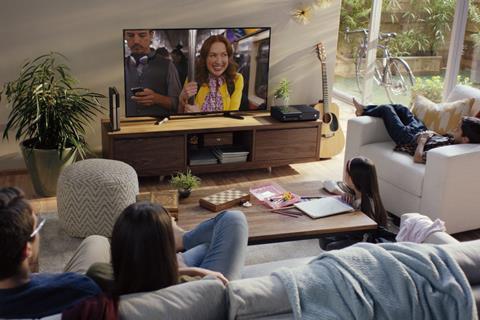By 2020 seven out of ten consumers will prefer video on-demand (VoD) and catch-up services over scheduled linear TV viewing, according to a report by Ericsson.

The ConsumerLab TV and Media report highlighted mobile and on-demand video viewing trends are predicted to thrive with half of all screen time within the next three years to be exclusively viewed on a mobile device and 50% of those views to be on the smartphone alone.
Traditional TV versus VoD
The smartphone is expected to continue to drive the change in consumers’ viewing habits to and beyond 2020.
Indeed, the smartphone is estimated to be consumers’ pick of devices to watch video content on. This is an increase of 85% from 2010, with half of all TV and video viewing set to be streamed using a smartphone.
Globally, the smartphone has been identified as the stimulant for accelerated growth in consumers watching more hours of video content across different devices.
Based on approximately 20,000 online interviews conducted across 13 countries the report outlined viewing content on a smartphone has doubled since 2010, now making up a fifth (six hours per week) of the time consumers spend watching TV.
Not surprisingly the report affirmed on-demand viewing was most popular amongst teenagers between 16 and 19 at 54%, not quite rivalling the popularity of linear TV for those between 60 and 69, who continue to spend 80% of their viewing time on traditional scheduled programming.
“Consumers are not only watching more video but also changing how and when they do so” - Anders Erlandsson
Ericsson Consumer Lab Senior Advisor Anders Erlandsson said: “As consumer expectations for on-demand, mobile and immersive viewing continues to increase, the TV and media industry must focus on delivering highly personalised services in the very best possible quality available.”

“We can see that consumers are not only watching more video but also changing how and when they do so. This is also shown through the continued growth of mobile viewing, which has been a booming trend since 2010,” said Erlandsson.
Time spent watching TV and video content has reached an all-time high of 30 hours a week, including active viewing of scheduled linear TV, live and on-demand internet services.
The findings also show that while consumers have more access to TV and video services than ever before, the average time spent on searching for content has increased to almost one hour per day, this is an increase of 13% since last year.
Ericsson attributed the changing consumers habits are driven by the growth of mobile viewing and the increasing interest in new technology such as virtual reality (VR). Notably, consumers showed a peak interest in virtual reality (VR).
Virtual reality to become a mainstream hit
Based on the results. which Ericsson said are representative of 1 billion people, VR is predicted to be well on the way to mainstream adoption, with one in three consumers integrating VR into their consumption habits by 2020. The report outlined the level of consumer interest in VR was higher than ever before.
Among current VR users, the general view was that their VR usage will rise over the next few years, and those who are not yet VR users plan to purchase new technology within the next 12 months. It was widely agreed amongst over half of the respondents that VR will become mainstream by 2020.
“VR has the potential to bring together people from all over the world and create deeper, more personalised, and more complementary media experiences.” - Anders Erlandsson.
VR technology is set to play an essential role in the future of TV and video, expected to integrate a social and immersive quality adding a valuable dimension to the consumers viewing experience.
According to Ericsson’s report, the industry must adapt along with consumers interest in VR. Mainly, the cost of VR devices to be cheaper, with 55% of consumers preferring a reduction in the price of headsets and more widely available immersive content.
The report concluded: ”with these issues currently being addressed, it is not hard to believe that VR will completely change the rules of future content viewing and creation.”
























No comments yet